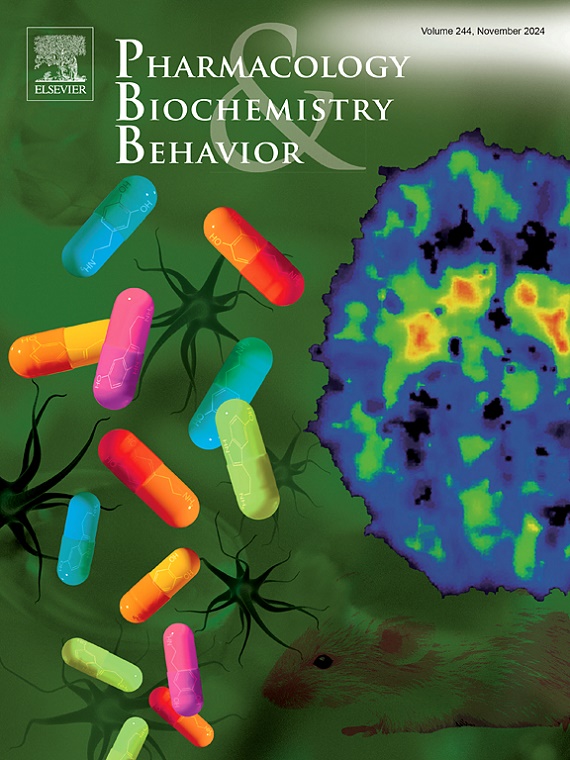Enhanced novelty-seeking after early adolescent exposure to vicarious social defeat predicts the vulnerability of female mice to cocaine reward
IF 3.3
3区 心理学
Q1 BEHAVIORAL SCIENCES
引用次数: 0
Abstract
Stressful experiences can have a serious impact on adolescents, as the process of brain maturation, particularly of the prefrontal cortex, takes place during this developmental period. In animal models, male mice exposed to social defeat during early or late adolescence show increased vulnerability to cocaine reward, but this effect has only been studied in late adolescent female mice exposed to Vicarious Intermittent Social Defeat (VISD). The aim of the present study was to investigate the biochemical and behavioural effects of exposure to VISD during early adolescence in female mice. VISD only induced anxiety-like symptoms in the elevated plus maze (EPM) and increased novelty-seeking behaviour in the hole-board test. Furthermore, the behavioural profile of VISD-exposed mice in these tests was associated with their vulnerability or resilience to cocaine reward in adulthood. Female mice that exhibited a higher frequency of entries in the closed arms of the EPM and a lower latency of dips in the hole-board subsequently acquired cocaine-induced conditioned place preference. Thus, exposure of female mice to VISD during early adolescence also induced short-term changes that increased sensitivity to cocaine reward in susceptible individuals.
在青春期早期暴露于替代性的社会失败后,寻求新奇事物的增强预示着雌性老鼠对可卡因奖励的脆弱性。
压力经历会对青少年产生严重影响,因为大脑成熟的过程,特别是前额皮质,发生在这个发育时期。在动物模型中,在青春期早期或晚期暴露于社交失败的雄性小鼠对可卡因奖励的脆弱性增加,但这种影响仅在青春期晚期暴露于替代性间歇性社交失败(VISD)的雌性小鼠中进行了研究。本研究的目的是研究雌性小鼠青春期早期暴露于VISD的生化和行为影响。VISD仅在升高+迷宫(EPM)中引起焦虑样症状,并在孔板测试中增加寻求新奇的行为。此外,在这些测试中,暴露于visd的小鼠的行为特征与它们成年后对可卡因奖励的脆弱性或恢复力有关。雌性小鼠进入EPM闭合臂的频率较高,在孔板上的潜伏期较低,随后获得了可卡因诱导的条件位置偏好。因此,雌性小鼠在青春期早期暴露于VISD也会引起短期变化,增加易感个体对可卡因奖励的敏感性。
本文章由计算机程序翻译,如有差异,请以英文原文为准。
求助全文
约1分钟内获得全文
求助全文
来源期刊
CiteScore
6.40
自引率
2.80%
发文量
122
审稿时长
38 days
期刊介绍:
Pharmacology Biochemistry & Behavior publishes original reports in the areas of pharmacology and biochemistry in which the primary emphasis and theoretical context are behavioral. Contributions may involve clinical, preclinical, or basic research. Purely biochemical or toxicology studies will not be published. Papers describing the behavioral effects of novel drugs in models of psychiatric, neurological and cognitive disorders, and central pain must include a positive control unless the paper is on a disease where such a drug is not available yet. Papers focusing on physiological processes (e.g., peripheral pain mechanisms, body temperature regulation, seizure activity) are not accepted as we would like to retain the focus of Pharmacology Biochemistry & Behavior on behavior and its interaction with the biochemistry and neurochemistry of the central nervous system. Papers describing the effects of plant materials are generally not considered, unless the active ingredients are studied, the extraction method is well described, the doses tested are known, and clear and definite experimental evidence on the mechanism of action of the active ingredients is provided.

 求助内容:
求助内容: 应助结果提醒方式:
应助结果提醒方式:


